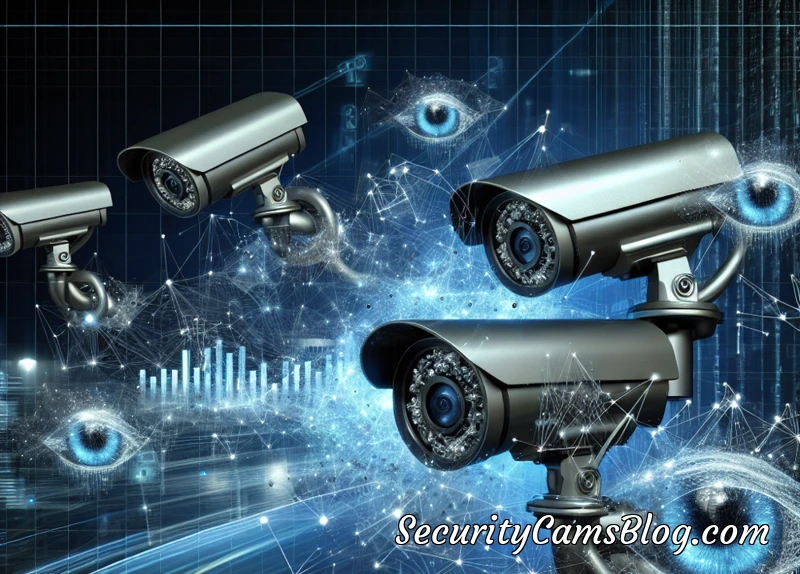Introduction
With the rapid advancement of technology, Closed-Circuit Television (CCTV) systems have become an essential tool for maintaining security and surveillance in various settings, from public spaces to private properties. However, the sheer volume of video data generated by these systems can be overwhelming, making it challenging for security personnel to monitor and analyze the footage effectively.
Enter machine learning (ML), a branch of artificial intelligence (AI) that enables computers to learn and improve from experience without being explicitly programmed. ML algorithms can analyze vast amounts of data and identify patterns, making them an ideal tool for CCTV video surveillance analysis.
Benefits of Using Machine Learning for CCTV Video Surveillance Analysis
Improved Accuracy and Efficiency
Machine learning algorithms can analyze CCTV footage with a high degree of accuracy and efficiency, reducing the risk of human error and freeing up security personnel to focus on other critical tasks. ML algorithms can quickly detect and track objects, people, and vehicles, and alert security personnel to any suspicious activity.
Proactive Security Measures
ML algorithms can learn from historical data and identify patterns and trends that may indicate potential security threats. By analyzing past incidents, ML models can predict future risks and enable security personnel to take proactive measures to prevent them.
Cost-Effective
Machine learning can help reduce the cost of security operations by minimizing the need for manual monitoring and analysis. ML algorithms can analyze vast amounts of data in real-time, making it possible to monitor multiple CCTV cameras simultaneously, which would be impossible for human operators.
Use Cases of Machine Learning for CCTV Video Surveillance Analysis
Crowd Management
Machine learning algorithms can analyze CCTV footage to monitor crowd behavior and detect any unusual activity or potential threats. ML models can track the flow of people, identify potential bottlenecks, and alert security personnel to any suspicious behavior or objects.
Traffic Monitoring
Machine learning algorithms can analyze CCTV footage to monitor traffic flow and detect any unusual activity or potential threats. ML models can track vehicles, identify potential traffic jams, and alert traffic management personnel to any suspicious behavior or objects.
Intrusion Detection
Machine learning algorithms can analyze CCTV footage to detect any unauthorized intrusion or potential threats. ML models can track people and vehicles, identify potential intruders, and alert security personnel to any suspicious behavior or objects.
Challenges of Using Machine Learning for CCTV Video Surveillance Analysis

Data Privacy and Security
Machine learning algorithms require large amounts of data to learn and improve, which can raise concerns about data privacy and security. It is essential to ensure that CCTV footage is stored and processed securely and that only authorized personnel have access to it.
Quality of CCTV Footage
The quality of CCTV footage can significantly impact the accuracy and efficiency of machine learning algorithms. Poor-quality footage can make it challenging for ML models to detect and track objects, people, and vehicles, leading to false positives or negatives.
Complexity and Cost
Implementing machine learning algorithms for CCTV video surveillance analysis can be complex and costly. It requires specialized knowledge and expertise in ML, AI, and security systems. Additionally, the cost of hardware, software, and maintenance can be prohibitive for some organizations.
Best Practices for Using Machine Learning for CCTV Video Surveillance Analysis
Define Clear Objectives
Before implementing machine learning algorithms for CCTV video surveillance analysis, it is essential to define clear objectives and goals. This will help ensure that the ML models are tailored to the specific needs and requirements of the organization.
Select Appropriate ML Models
Selecting appropriate ML models is crucial for the success of CCTV video surveillance analysis. It is essential to consider the type and quality of CCTV footage, the specific use case, and the desired outcomes. Choosing the right ML model can significantly impact the accuracy and efficiency of the analysis.
Ensure Data Privacy and Security
Ensuring data privacy and security is critical when using machine learning for CCTV video surveillance analysis. It is essential to implement appropriate data governance policies and procedures, including data anonymization, access controls, and encryption.
Conclusion
Machine learning has the potential to revolutionize CCTV video surveillance analysis, enabling organizations to improve accuracy, efficiency, and proactive security measures. However, implementing ML algorithms for CCTV video surveillance analysis can be complex and costly, and it requires specialized knowledge and expertise. By defining clear objectives, selecting appropriate ML models, and ensuring data privacy and security, organizations can leverage the power of machine learning to enhance their security operations and protect their assets and personnel.







